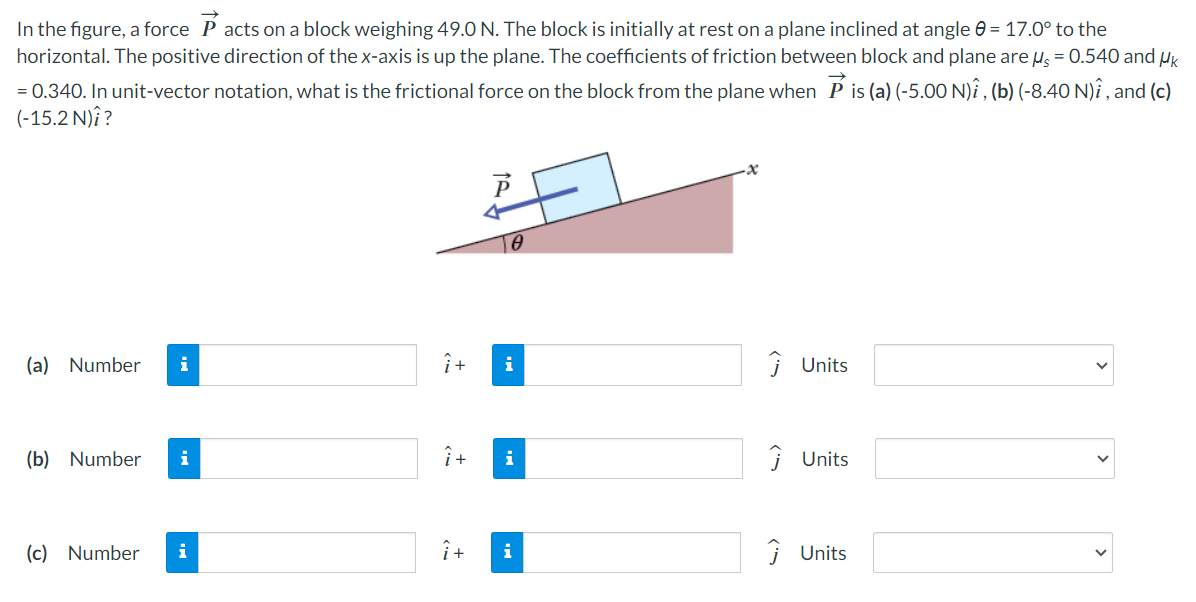In the figure, a force P→ acts on a block weighing 49.0 N. The block is initially at rest on a plane inclined at angle θ = 17.0∘ to the horizontal. The positive direction of the x-axis is up the plane. The coefficients of friction between block and plane are μs = 0.540 and μk = 0.340. In unit-vector notation, what is the frictional force on the block from the plane when P→ is (a) (-5.00 N) i^, (b) (-8.40 N) i^, and (c) (−15.2 N)i^?
